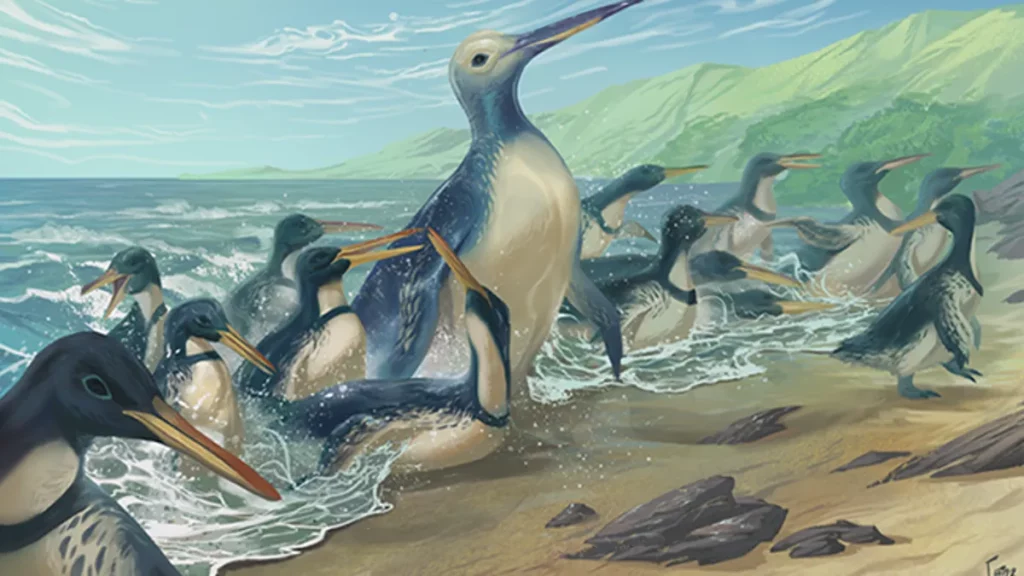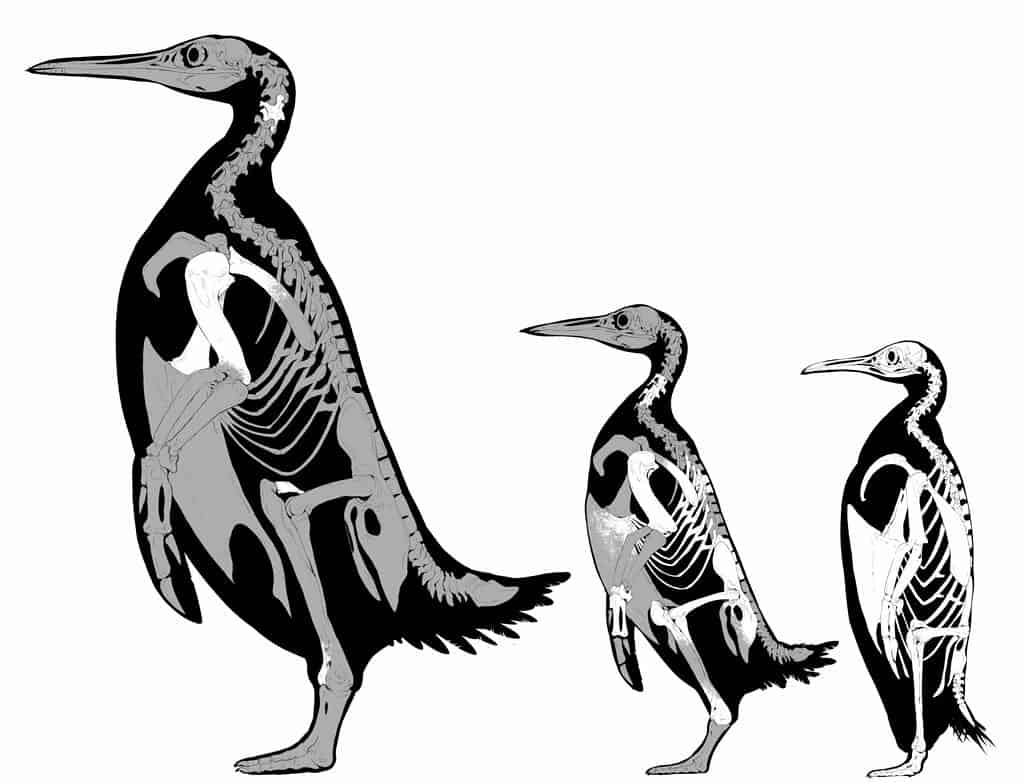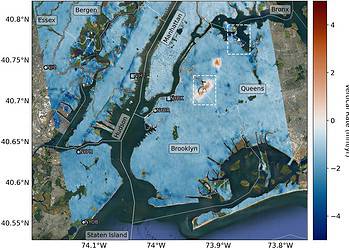
Among the 57-million-year-old beach boulders of New Zealand’s South Island, paleontologists have identified not one but two new species of penguins — and that’s not all. One of the penguins was quite the chonky boy, weighing more than 150 kilograms (330 pounds), which is more than three times the size of Antarctica’s emperor penguin, the biggest of the 18 species of penguin alive today.
“Fossils provide us with evidence of the history of life, and sometimes that evidence is truly surprising,” said co-author Dr. Daniel Field from Cambridge’s Department of Earth Sciences.
“Many early fossil penguins attained enormous sizes, easily dwarfing the largest penguins alive today. Our new species, Kumimanu fordycei, is the largest fossil penguin ever discovered—at approximately 350 pounds, it would have weighed more than Shaquille O’Neal at the peak of his dominance!”
Just because it was large, that doesn’t mean that Kumimanu fordycei was any slouch. Just like Shaq was massive yet agile on the basketball court, Kumimanu fordycei was likely capable of aquatic slam dunks of its own.
A very large penguin is capable of capturing larger prey, providing more precious calories. Most importantly though, a large body surface area is much more suitable for conserving body temperature, which can literally mean the difference between life and death when you call frigid waters your home. In fact, the researchers believe that the ancient extinct penguin was likely able to reach deeper waters and find food that isn’t accessible to living penguins.
“When we start thinking of these finds not as isolated bones but as parts of a whole living animal then a picture begins to form,” said co-author Dr. Daniel Thomas from Massey University in Auckland.

The second ancient penguin, dubbed Petradyptes stonehousei, is much smaller, tipping the scales at “just” 50 kilograms (110 pounds). But that’s still much heftier than an adult Emperor which weighs between 22 and 45 kg (49 and 99 pounds).
Both sets of fossils were found somewhat by accident, while New Zealand Te Papa Tongarewa Curator Alan Tennyson was out on the beach on a fossil collection trip between 2016 and 2017. Tennyson later painstakingly removed the rock to reveal the fossilized bounty inside the boulders, including nine partial penguin skeletons.
Over the years, the team used laser scanners to create high-resolution digital models of the fossils, which they used to compare them to other extinct ancient bird species and modern penguins. Hundreds of modern penguin bones were carefully measured, and this data was then fed into a Bayesian statistical model in order to estimate the size of Kumimanu fordycei and Petradyptes stonehousei.
The rocks in which the fossils were found encased are believed to be around 57 million years old, which places the two penguins less than 10 million years after the horrible end-Cretaceous mass extinction when a giant asteroid wiped out all non-avian dinosaurs. A congregation of thousands of these giant penguins on New Zealand’s beaches must have been truly a sight to behold.






